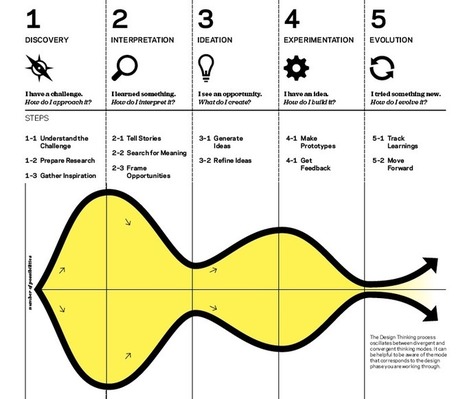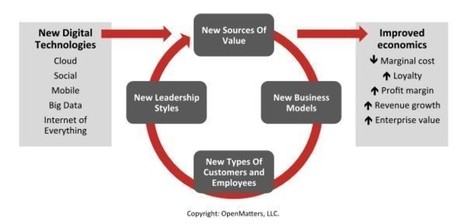How is it that certain people are so incredibly persuasive? Can we all harness those skills? After studying the most influential political, social, business and religious leaders, and trying countless techniques out myself, these are the 21 critical lessons I’ve identified to persuading people. This is an overview from a talk I’ve been giving to thousands of entrepreneurs for a few years now on “How to Persuade People.” More detailed examples are explained in the links below.
THE BASICS
1. Persuasion is not Manipulation - Manipulation is coercion through force to get someone to do something that is not in their own interest. Persuasion is the art of getting people to do things that are in their own best interest that also benefit you.
2. Persuade the Persuadable - Everyone can be persuaded, given the right timing and context, but not necessarily in the short term. Political campaigns focus their time and money on a small set of swing voters who decide elections. The first step of persuasion is always to identify those people that at a given time are persuadable to your point of view and focus your energy and attention on them.
3. Context and Timing - The basics building blocks of persuasion are context and timing. Context creates a relative standard of what’s acceptable. For example the Stanford Prisoner Experiment proved that overachieving students could be molded into dictatorial prison guards. Timing dictates what we want from others and life. We chose to marry a different type of person than we date when we’re younger, because what we want changes.
4. You have to be Interested to be Persuaded - You can never persuade somebody who’s not interested in what you’re saying. We are all most interested in ourselves, and spend most of our time thinking about either money, love or health. The first art of persuasion is learning how to consistently talk to people about them; if you do that then you’ll always have their captive attention.
GENERAL RULES
5. Reciprocity Compels – When I do something for you, you feel compelled to do something for me. It is part of our evolutionary DNA to help each other out to survive as a species. More importantly, you can leverage reciprocity disproportionately in your favor. By providing small gestures of consideration to others, you can ask for more back in return which others will happily provide. (TIP: read ”Influence” by Robert Cialdini)
6. Persistence Pays - The person who is willing to keep asking for what they want, and keeps demonstrating value, is ultimately the most persuasive. The way that so many historical figures have ultimately persuaded masses of people is by staying persistent in their endeavors and message. Consider Abraham Lincoln, who lost his mother, three sons, a sister, his girlfriend, failed in business and lost eight separate elections before he was elected president of the United States.
7. Compliment Sincerely - We are all so positively affected by compliments, and we’re more apt to trust people for whom we have good feelings. Try complimenting people sincerely and often for things they aren’t typically complimented for, it’s the easiest thing you can do to persuade others that doesn’t cost anything but a moment of thought.
8. Set Expectations - Much of persuasion is managing other’s expectations to trust in your judgment. The CEO who promises a 20% increase in sales and delivers a 30% increase is rewarded, while the same CEO who promises a 40% increase and delivers 35% is punished. Persuasion is simply about understanding and over-delivering on other’s expectations.
9. Don’t Assume - Don’t ever assume what someone needs, always offer your value. In sales we’ll often hold back from offering our products/services because we assume others don’t have the money or interest. Don’t assume what others might want or not want, offer what you can provide and leave the choice to them.
10. Create Scarcity – Besides the necessities to survive, almost everything has value on a relative scale. We want things because other people want these things. If you want somebody to want what you have, you have to make that object scarce, even if that object is yourself.
11. Create Urgency – You have to be able to instill a sense of urgency in people to want to act right away. If we’re not motivated enough to want something right now, it’s unlikely we’ll find that motivation in the future. We have to persuade people in the present, and urgency is our most valuable card to play.
12. Images Matter – What we see is more potent that what we hear. It may be why pharma companies are now so forthcoming with the potentially horrible side effects of their drugs, when set to a background of folks enjoying a sunset in Hawaii. Perfect your first impressions. And master the ability to paint an image for others, in their minds eye, of a future experience you can provide for them.
13. Truth-Tell – Sometimes the most effective way to persuade somebody, is by telling them the things about themselves that nobody else is willing to say. Facing the hard truths are the most piercing, meaningful events that happen in our lives. Truth-tell without judgement or agenda, and you’ll often find others’ responses quite surprising.
14. Build Rapport - We like people who we are like. This extends beyond our conscious decisions to our unconscious behaviors. By Mirroring and Matching others habitual behaviors (body language, cadence, language patterns, etc.) you can build a sense of rapport where people feel more comfortable with you and become more open to your suggestions.
PERSONAL SKILLS
15. Behavioral Flexibility - It’s the person with the most flexibility, not necessarily the most power, who’s in control. Children are often so persuasive because they’re wiling to go through a litany of behaviors to get what they want (pouting, crying, bargaining, pleading, charming), while parents are stuck with the single response of “No.” The larger your repertoire of behaviors, the more persuasive you’ll be.
16. Learn to Transfer Energy - Some people drain us of our energy, while others infuse us with it. The most persuasive people know how to transfer their energy to others, to motivate and invigorate them. Sometimes it’s as straightforward as eye contact, physical touch, laughter, excitement in verbal responses, or even just active listening.
17. Communicating Clearly is Key - If you can’t explain your concept or point of view to an 8th grader, such that they could explain it with sufficient clarity to another adult, it’s too complicated. The art of persuasion lies in simplifying something down to its core, and communicating to others what they really care about.
18. Being Prepared Gives you the Advantage - Your starting point should always be to know more about the people and situations around you. Meticulous preparation allows for effective persuasion. For example, you dramatically improve your odds in a job interview being completely versed in the company’s products, services, and background.
19. Detach and Stay Calm in Conflict - Nobody is more effective when they are “On Tilt.” In situations of heightened emotion, you’ll always have the most leverage by staying calm, detached and unemotional. In conflict, people turn to those in control of their emotions, and trust them in those moments to lead them.
20. Use Anger Purposefully - Most people are uncomfortable with conflict. If you’re willing escalate a situation to a heightened level of tension and conflict, in many cases others will back down. Use this sparingly, and don’t do it from an emotional place or due to a loss of self control. But do remember, you can use anger purposefully for your advantage.
21. Confidence and Certainty - There is no quality as compelling, intoxicating and attractive as certainty. It is the person who has an unbridled sense of certainty that will always be able to persuade others. If you really believe in what you do, you will always be able to persuade others to do what’s right for them, while getting what you want in return.
Via
Daniel Watson



 Your new post is loading...
Your new post is loading...

















































When your fear stems from confronting a higher-up, remember that title and rank don’t define leadership. The more you speak up and show confidence in the face of authority, the more leadership you’ll be able to project despite your underlying nervousness.
Are despite everything you Confused on the choosing the best Custom Brochure Design Company ..? Kool Design Maker is a standout amongst other Brochure Design Company Which gave you the Custom Brochure Design Services at shabby and reasonable rates with 100% fulfillment
Hot topic these days and without a doubt high EQ moves the needle on more ways than one in every organization